The Invisible Infrastructure of Connection
How public spaces and tiny interactions matter more than we realize
The trust of a city street is formed over time from many, many little public sidewalk contacts… Most of it is ostensibly utterly trivial, but the sum is not trivial at all. —Jane Jacobs
On a dusty sunburnt day in Marrakesh, two girls in their late teens grabbed me each by an arm and hurled us all into incoming traffic. I shut my eyes and only opened them once we’d emerged on the other side—alive, laughing, and strangely exhilarated in the middle of Jemaa el-Fnaa square.
The girls were smiling. They didn’t know me, although we’d shared a taxi a few minutes earlier. During the ride I wondered why the driver picked them up after I was already in the car, until I realized that’s just how taxis work here. They are shared spaces.
I got out of the taxi and froze, staring at the churning sea of cars, tuktuks, and donkey carts with no crosswalk in sight. Sensing my hesitation, they showed me how the locals cross… by walking straight into traffic.
Marrakesh’s streets are loud, alive, and pull everyone into the same shared space. Everyone negotiating movement together. While it looks unhinged, somehow it works.
Crossing the chaotic street bonded us more than the taxi ride. We hugged and laughed like old friends, exchanged Instagrams, then they disappeared into the labyrinth of the medina. I never saw them again.
These micro moments of strangers crossing paths for just a few minutes are often the highlight of my travels. But the more I move through the world, the more I realize that the design of our cities shapes how often these serendipitous crossings happen. Walkability, transportation, and gathering spots not only influence our physical health through movement, but also our mental health through connection, empathy, and togetherness.
Listening to a podcast from Esther Perel, a renowned psychotherapist and author who studies human relationships, I was reminded how isolated we are today. In many American cities, people go from home to car to work to home and rely on online deliveries, losing everyday human interactions. In older, walkable cities in Europe where cafe culture reigns, or small pueblos in Colombia where the elderly sit on the streets, walking creates natural opportunities for people to meet, chat, and feel part of a community.
Jane Jacobs, an author who wrote and observed that the trust of a city street is formed over time from many little public sidewalk contacts1 . People stopping by the bar for a beer, getting advice from the grocer, keeping an open tab for weeks at the local cafe, admiring new babies, or sympathizing over a current event. All these seemingly trivial interactions accumulate into a web of public respect and trust, a social resource that can be relied on in times of need. Even the most quotidian errands and exchanges contribute to a feeling of community, which is largely absent in car-dependent, convenience-focused cities.
1. What Makes a Third Place
Traditionally, third places are the places we go that aren’t home or work and that are free or low-cost. They are places like coffee shops, libraries, parks, and gyms. But I think that definition misses something essential: the street.
There’s a wonderful photobook by New York photographer Joel Meyerowitz, where he beautifully writes about street photography. Because the street is where life happens, and where strangers’ lives collide. People interacting across ages, cultures, and backgrounds. The street is where we step outside of our private worlds and meet the public.
Third places are where connection happens by design or by accident. They are the antidote to isolation because they encourage eye contact, small acts of kindness, and the awareness that we’re part of a shared world.
2. Stories from the Road
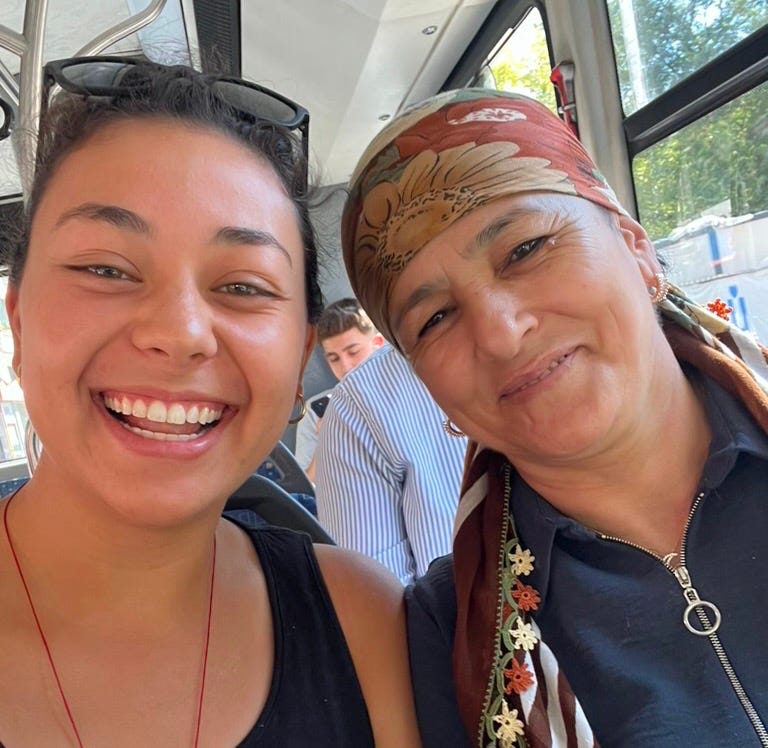
Istanbul. The first time I was in Istanbul, I was waiting at a bus stop alone when a woman joined me. She started talking in fast Turkish and pointed to my wallet. At first, I thought she was asking for money, but then I realized she wanted me to pay her bus fare with my card, and she would pay me back in cash (buses only accept transit cards, not cash). The bus finally arrived, and I helped her board. Inside, we used Google Translate to have a nice conversation. She even helped me figure out which bus to transfer to and which ferry to take across the Bosphorus. Small, fleeting interactions like these give hope in humanity make ordinary days feel special.
Hong Kong. I walked along the Avenue of the Stars overlooking the humid harbor of Hong Kong. It was my first night in the city, and I didn’t know anyone or have any plans. People around me were taking photos with the skyline, and I tried taking a selfie with my phone, but it didn’t do it justice. I took out my Sony camera and attempted a selfie, wishing I had someone to travel with so that I didn’t have to take awkward selfies. I must have looked ridiculous because a stranger around my age stopped and offered to take my photo. That’s how I met Natasha, who is my age and from St. Petersburg, Russia, but lives in Chongqing, China studying medicine. We bonded immediately. Since we were both alone without plans, we walked to a 7-Eleven, grabbed a couple of beers, and then sat on a bench by the harbor talking for three hours. She shared the complications of holding a Russian and Chinese passport, we bonded over a love of cultures and travel, and by chance we crossed paths again in Kyoto a month later. Looking back on Hong Kong, it isn’t the skyline or buildings that linger in my memory, it’s those few hours spent talking and connecting with Natasha.
Chicago. Last week, I visited the city for work to study a community-run group called Peace Runners, which brings neighbors together to run and walk in a disinvested and overlooked neighborhood of the West Side of the city.
I took the metro instead of an Uber, which gave me a chance to experience public interaction. On the stairs, I helped an elderly woman in colorful African clothes carry her heavy suitcase. Her English was limited, but she thanked me repeatedly. This simple moment illustrated how being in public lets us help others and bond with strangers.
My conclusion after spending a few days with the Peace Runners group, shows that these small, everyday connections build a strong sense of community, even in neighborhoods under tension, proving how empathy, interaction, and movement (walking and running) strengthen the bonds that keep communities resilient.
Austin. While many third-place interactions happen while walking or on public transport, they can also happen in car-dominated cities. Last week, I discovered a Syrian coffee shop tucked inside a Mexican-owned laundromat. The Syrian barista was learning Spanish; the laundromat owner was learning Arabic. People of all sorts were coming in to do their laundry. Some looked like they may live out of their car, others were students, and others brought their fancy duvet covers to dry. On the cafe side, people were glued to their computers, police officers came in for coffee, and a country band was playing in the corner. Later, the barista noticed I was watching an Arabic online course, so he came over and helped me practice. Later, in a spontaneous act of generosity, he made mini pistachio-cardamom lattes for everyone. The cafe buzzed with excitement and we all started chatting with each other. Third places like this where people of all sorts can cross paths and have personal interactions, aren’t just idyllic, they are functional and important.
3. What the Data Says
A study published in Nature Cities2 found that in cities like Zurich, Dublin, and Copenhagen, more than 95% of residents can reach essential services within a 15-minute walk or bike ride. In Paris and Madrid, it’s around 90%. In U.S. cities like San Antonio it’s just 2.5%.
Paris is an excellent example of how change is possible. In less than 10 years, cycling traffic in Paris increased by 240%, and is on track to be 100% bike-friendly by 2026. Air pollution in the Paris region has also been cut in half over the past two decades. These city-wide changes don’t just improve mobility, they create the conditions for everyday human interactions.
Walkable urban areas also have significant economic impacts. They comprise just 1.2% of the land in the 35 largest U.S. metropolitan areas but generate nearly 20% of the nation’s GDP 3. Walkable communities often experience higher rates of job creation and economic resilience due to increased foot traffic and local commerce.4
4. Choosing to Be Part of the Street
While more third places and better walkability can mean more chances to meet new people, observe, and share a fleeting sense of humanity, we can also choose to walk, linger, and create tiny openings for connection. Even small efforts help bring life back to our streets.
Most of the time, these interactions are simple: the wave of a baker through the window, an invitation from a bartender, the barista who remembers your order, the elderly woman you help with her suitcase, the new friend you make on a park bench, or the fleeting experience of crossing a chaotic street in Marrakesh where strangers take your arms and guide you to safety with a smile.
The Death and Life of Great American Cities by Jane Jacobs
World Economic Forum: Why walkable urban areas are America’s efficient economic engines



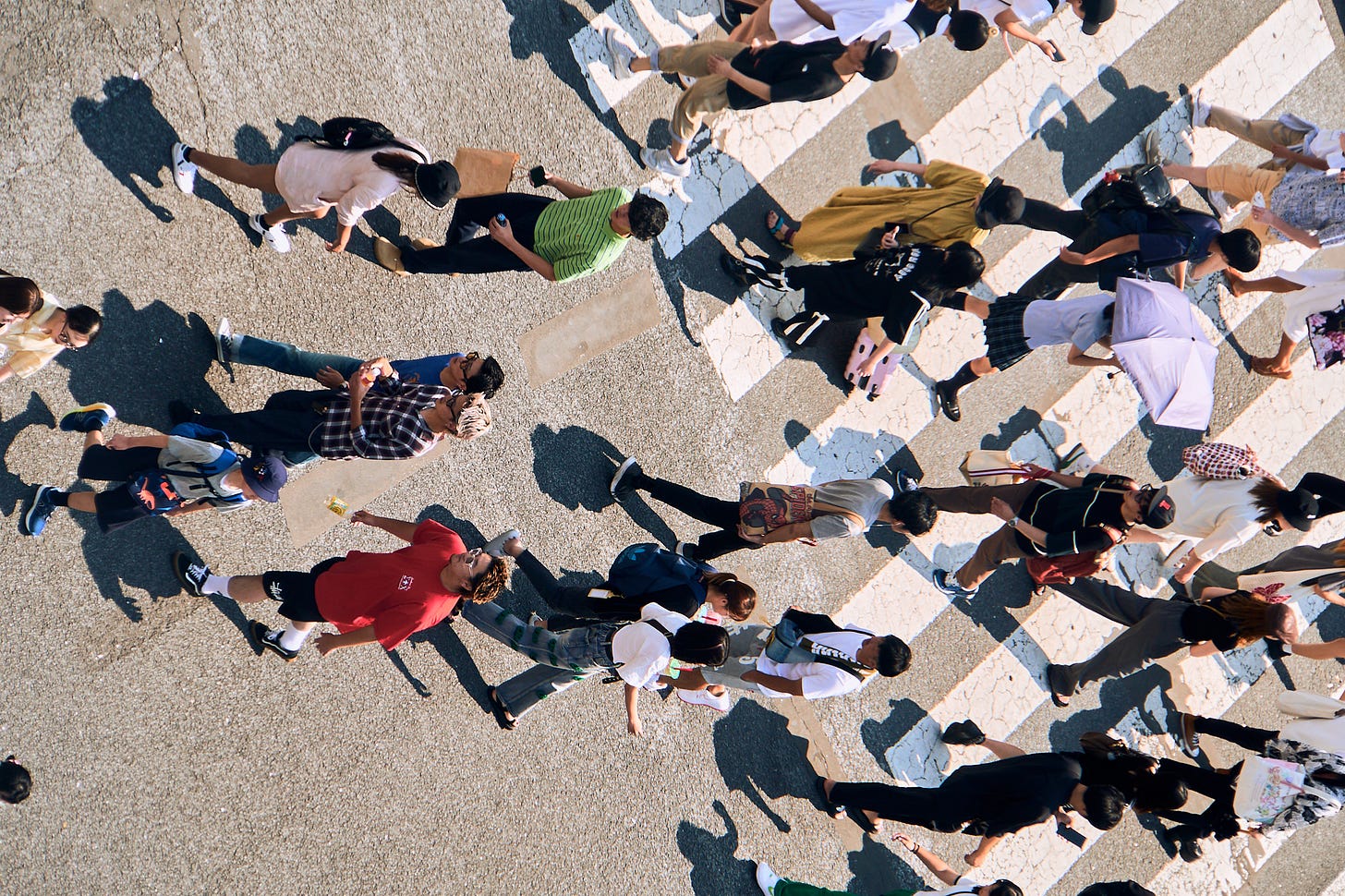
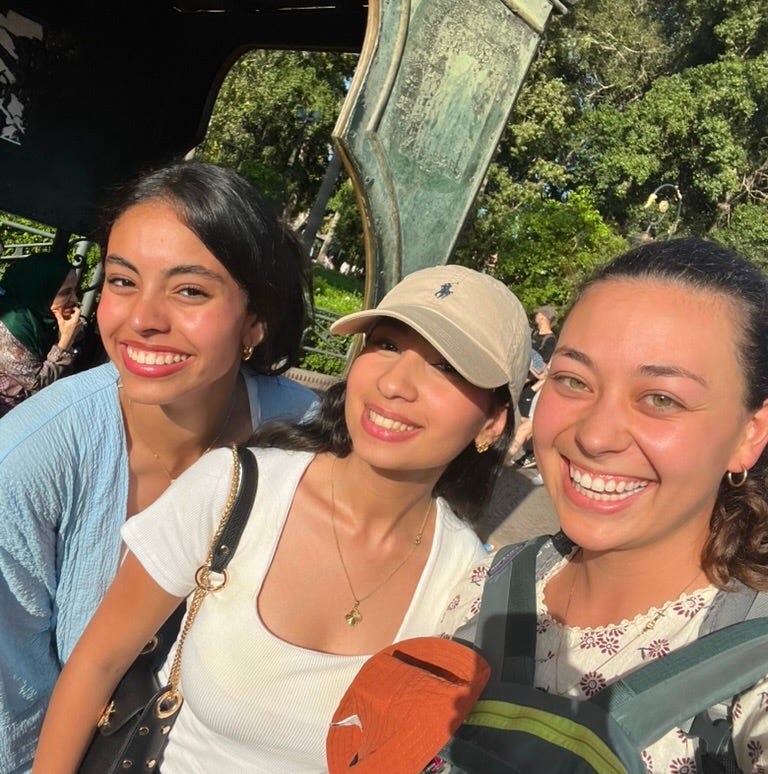
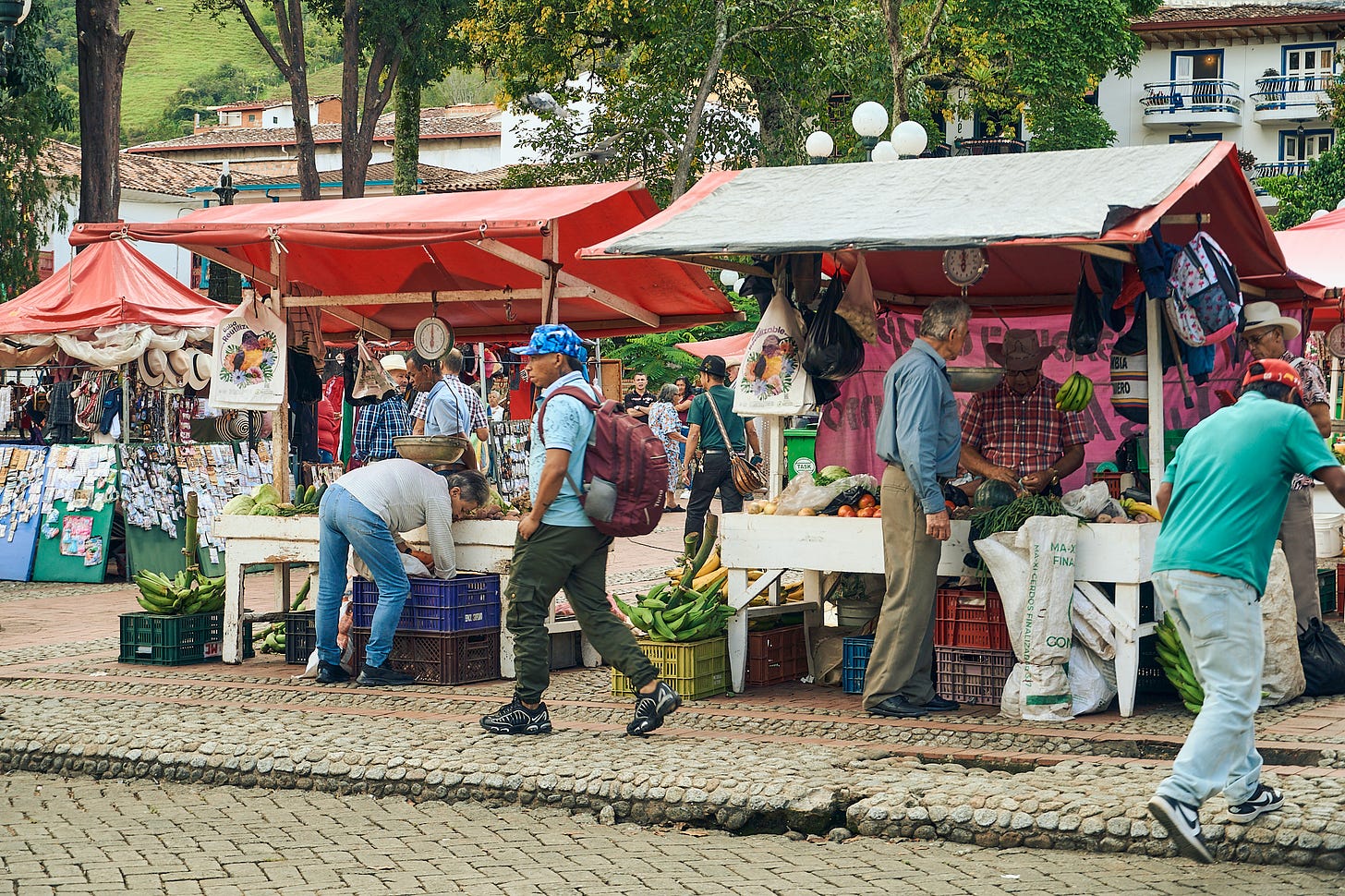
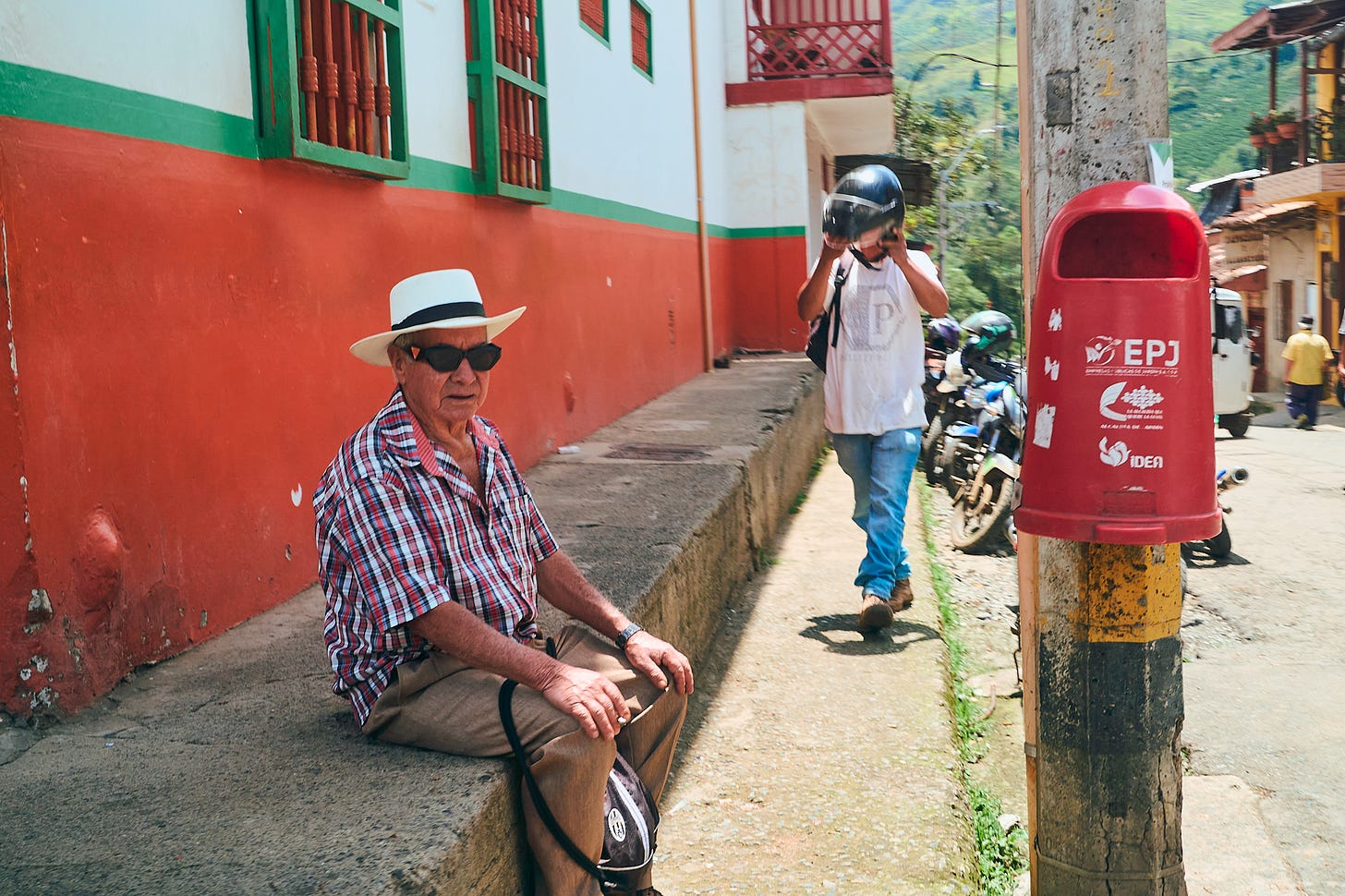
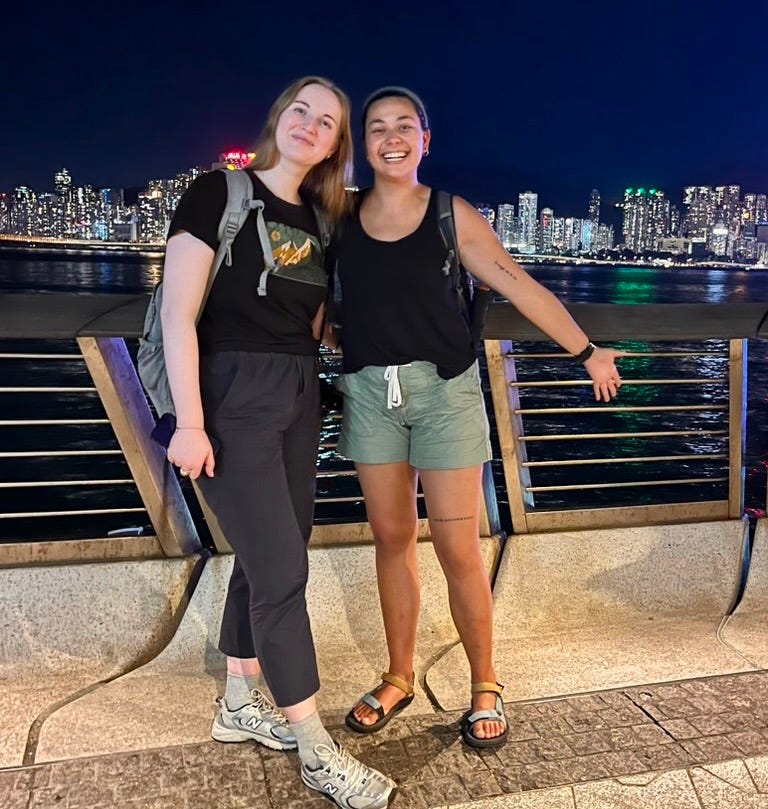
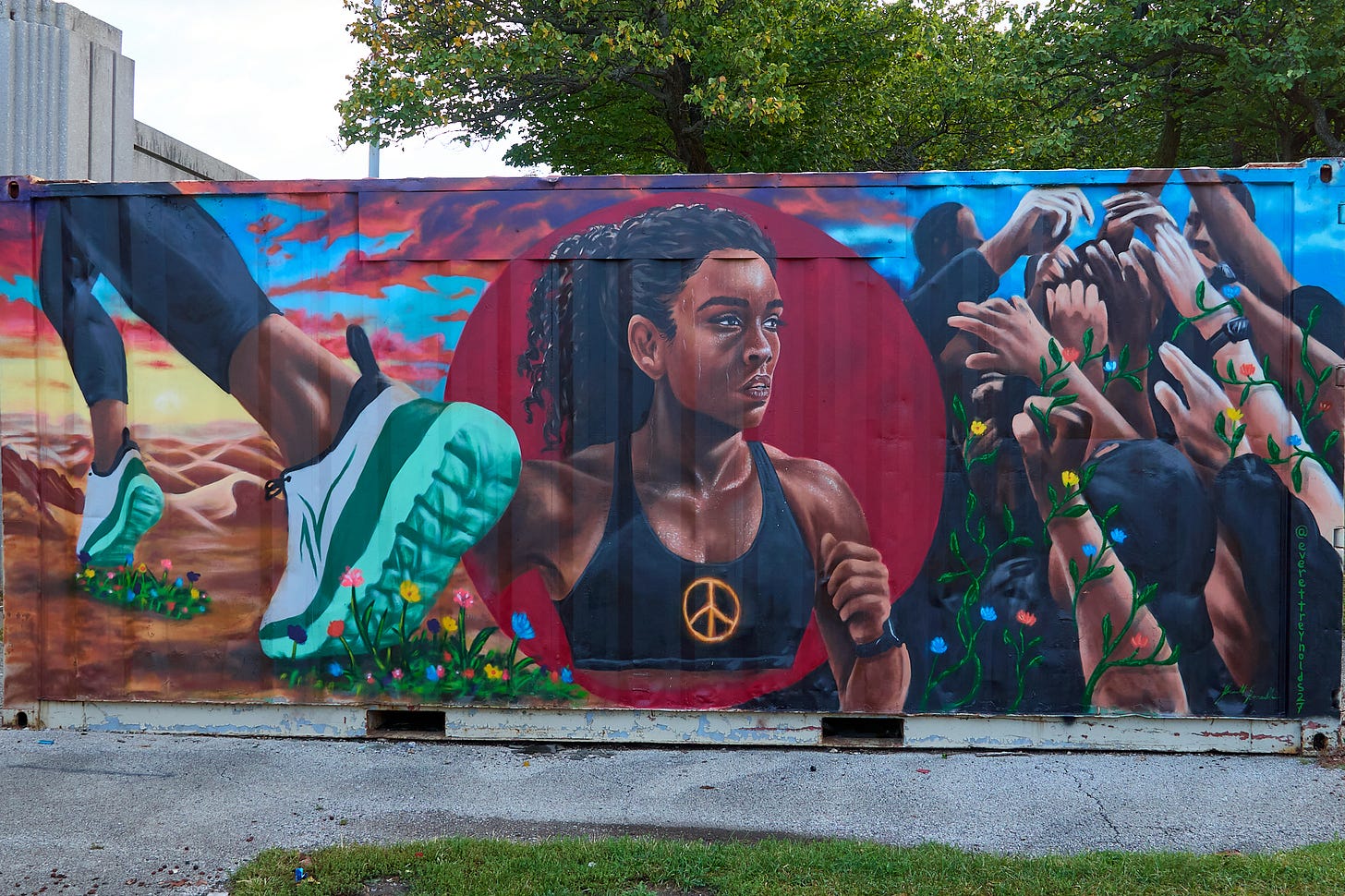
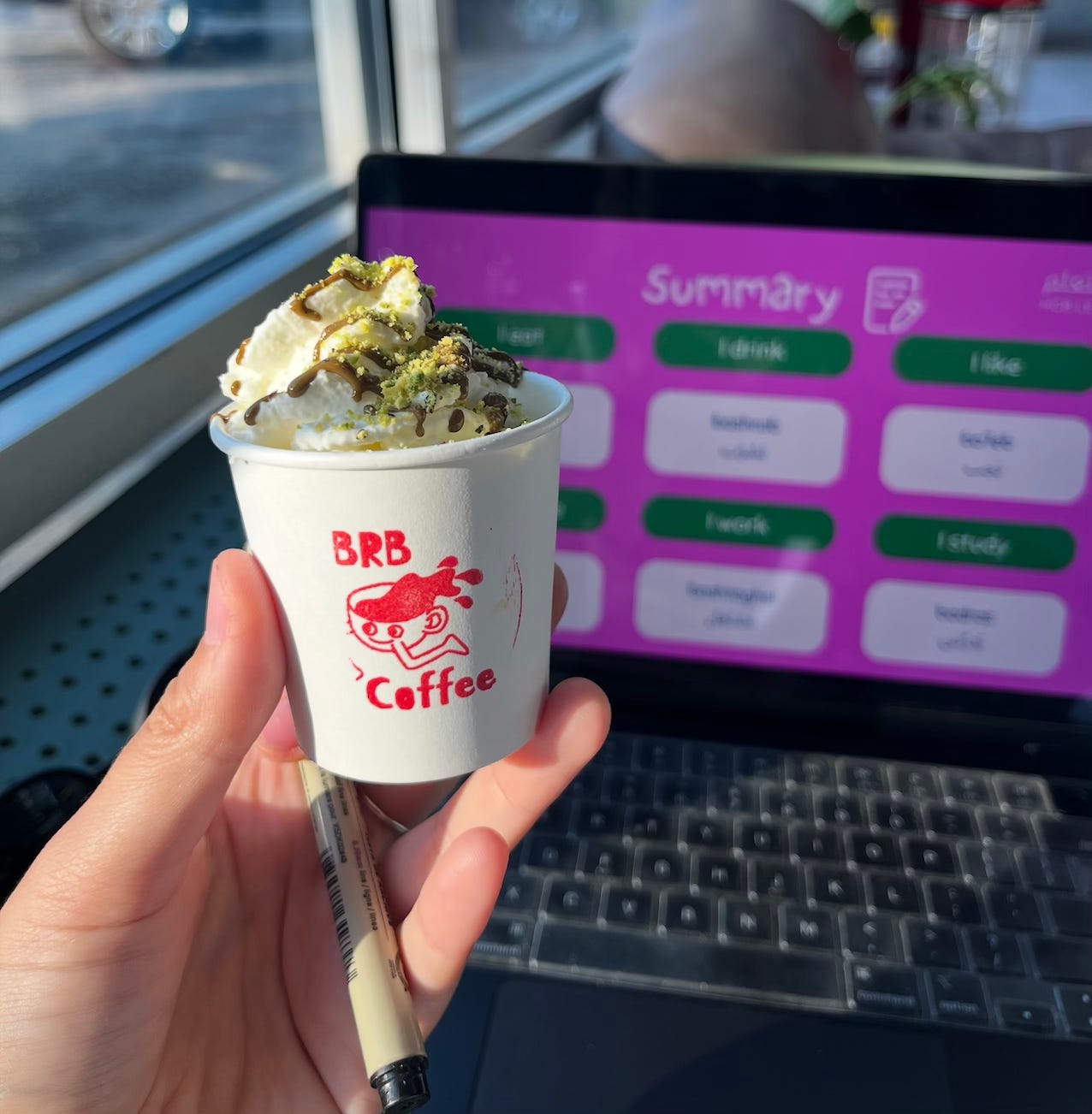
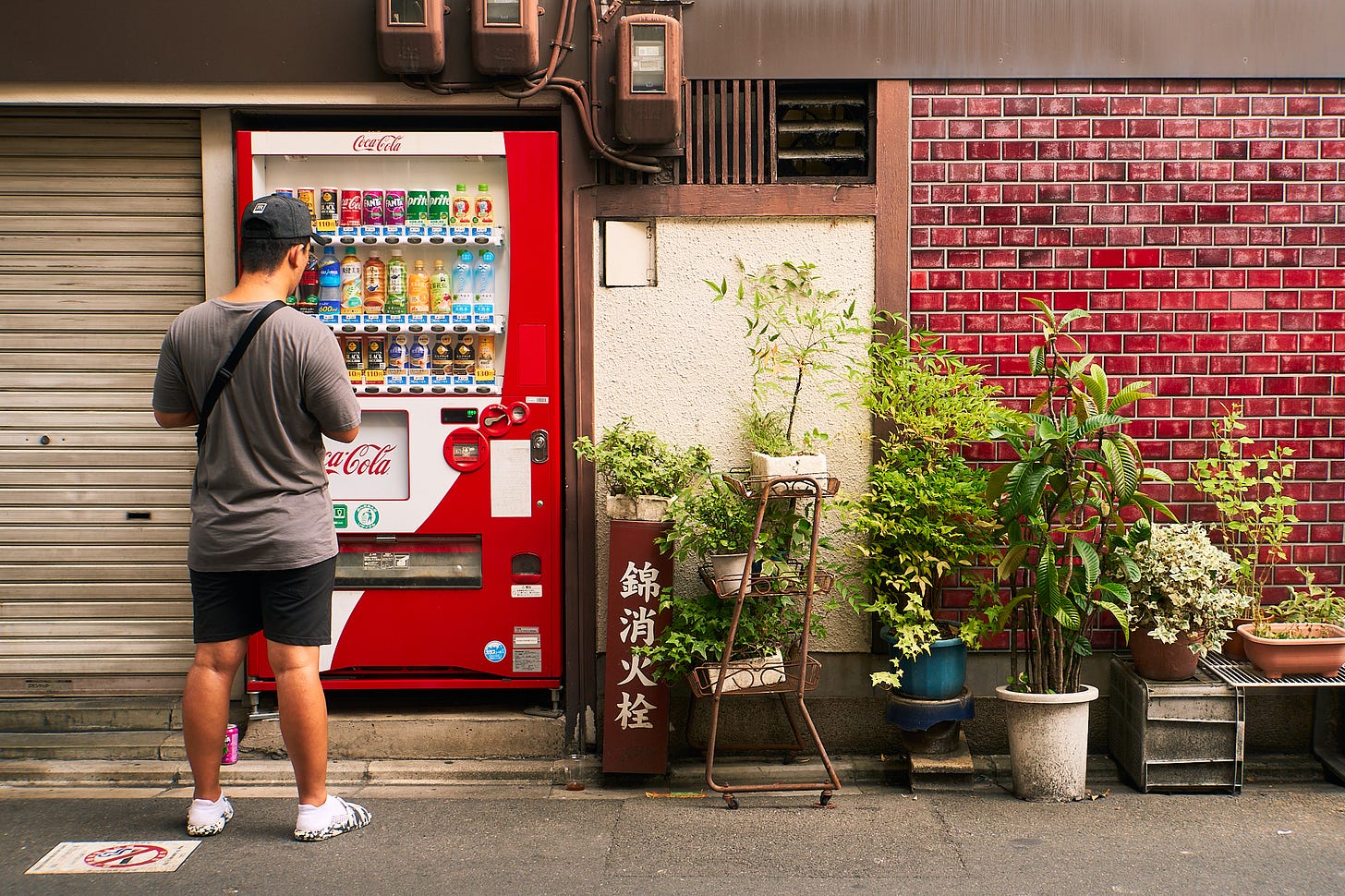
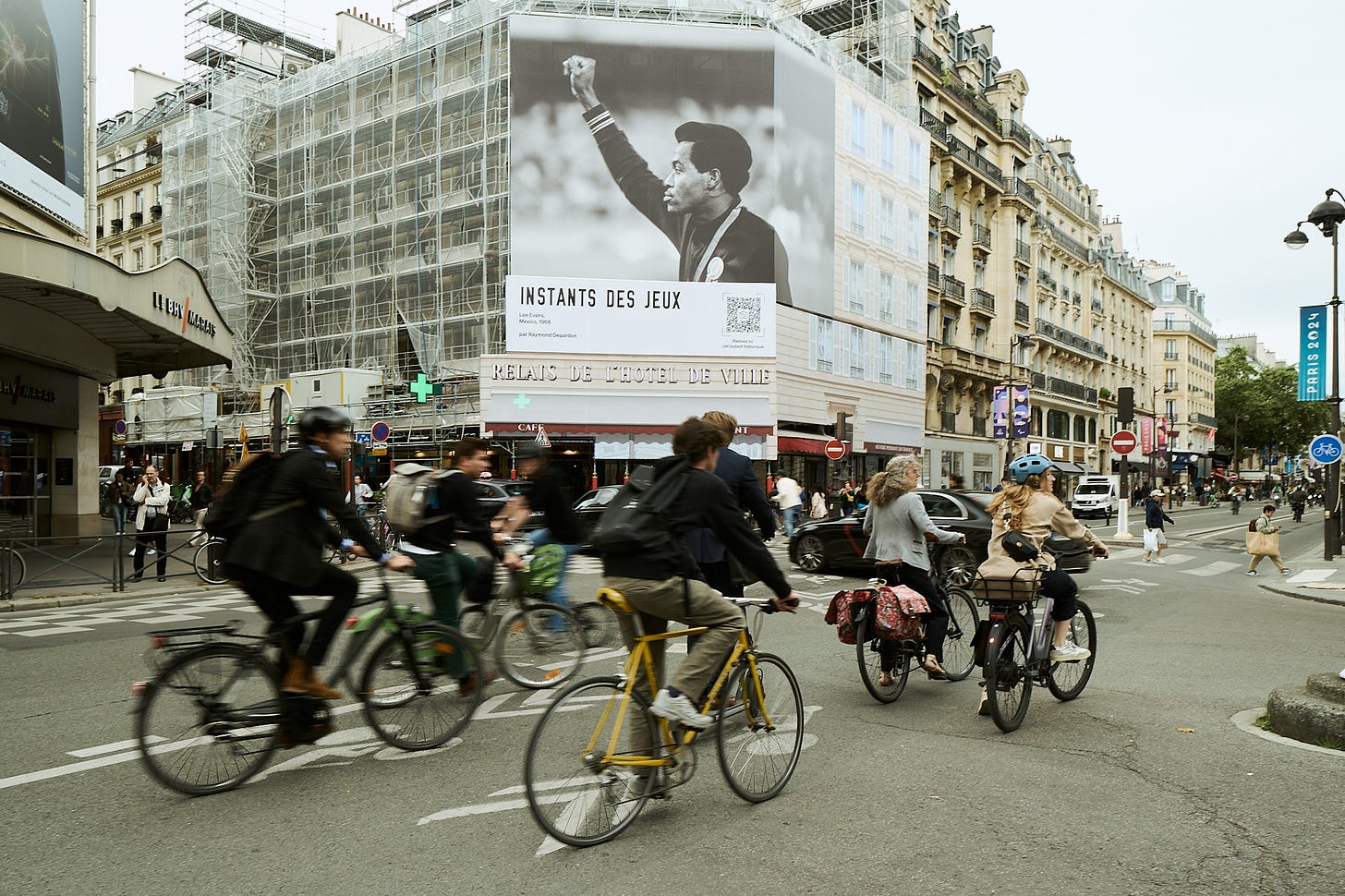
An abundance of accessible 3rd spaces make or break a city for me!! I just can’t live somewhere that I don’t feel a PART of!
I enjoyed reading all of these examples and hearing the basic human decency among so many people. When I was younger, I would always imagine myself living somewhere out in the woods by myself and now I can't picture living anywhere but an urban area!